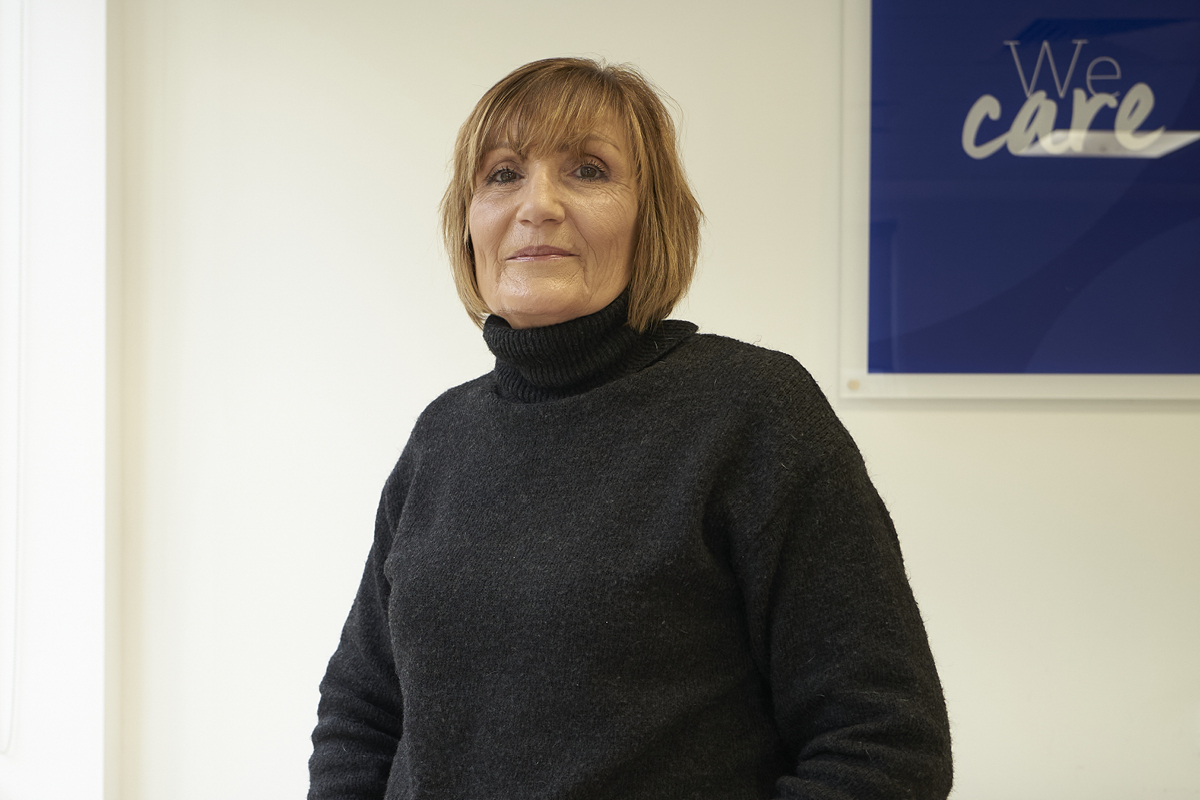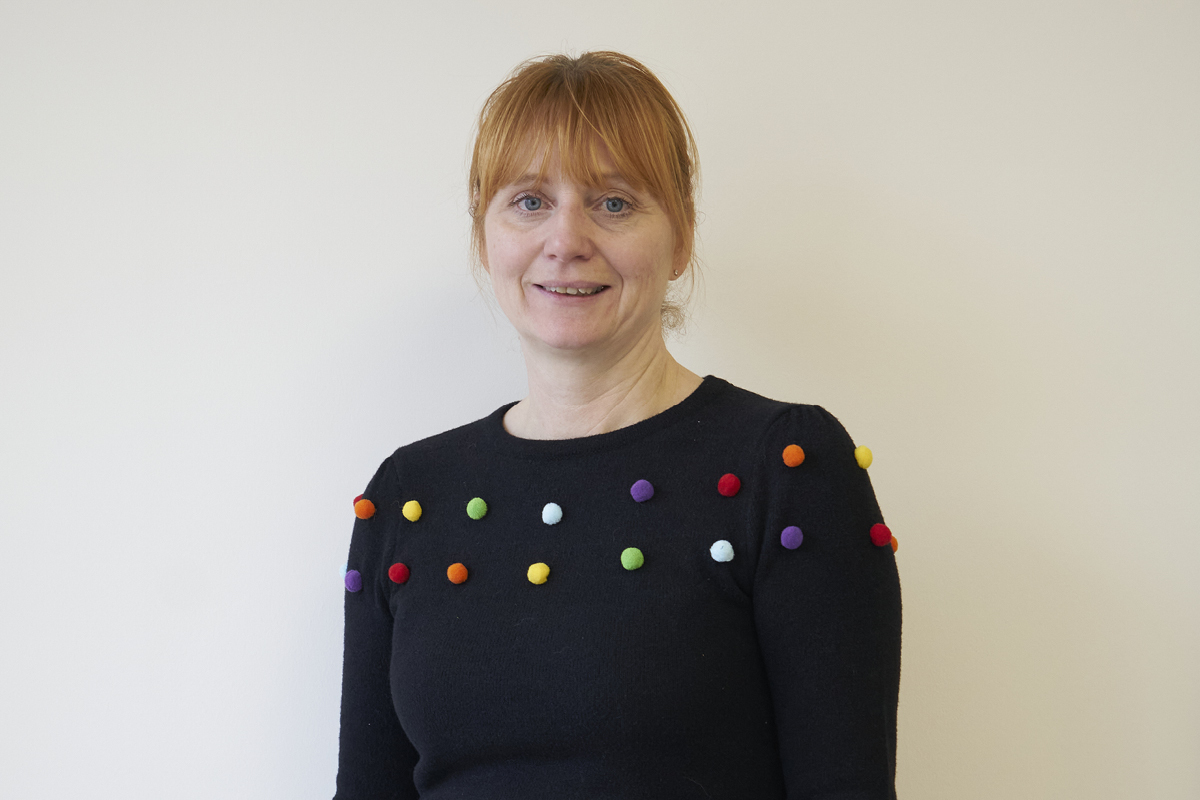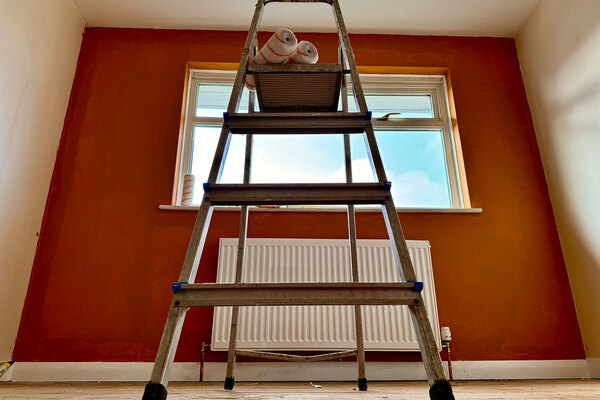You are viewing 1 of your 1 free articles
The women shaking up repairs
Repairs and maintenance jobs have often been dominated by men. Maria Shahid speaks to a team of women working to change that. Photography by Julian Anderson

Hailey Towner first experienced housing repairs by chance 12 years ago, when she joined a job scheme through her school. Now she is a planning manager in charge of booking repairs at Golding Homes. “I’m really proud to work in social housing. I like being a woman in a ‘trade’ environment,” she says.
Ms Towner is one of a growing number of women to have joined the repairs and maintenance team at Kent-based 8,000-home housing association Golding Homes over the past few years. Run by Carol Meloy, head of repairs and maintenance, the team includes five women in senior roles.
While women account for 57% of housing association staff in England, according to the National Housing Federation’s 2021 report on equality, diversity and inclusion, the repairs and maintenance side of the sector is a different story.
Figures are patchy, but a 2017 report from contractor Mears estimated that “it might be reasonable to assume that the proportion of women working in trades [in the housing sector]… is similar to the proportion working
in [UK] construction trades as a whole, ie around 1%”.
And when it comes to senior jobs managing these services, men are also over-represented.
Golding Homes is bucking the trend, with 23% of the whole repairs and maintenance team being women. “It’s such a different environment to other housing associations I’ve worked for,” says Ms Towner. “In previous organisations, I have come across a lot of men who have moved from trade into a managerial role, whereas here it’s very different. At Golding, there are a lot of women who have come from different backgrounds and we all bring something completely different to the equation, creating a more customer-focused approach.”
This comes as more organisations look to broaden the demographics of people taking on trade roles and working in repairs and maintenance. A report published by the Construction Industry Training Board last summer forecasted that by 2026, 266,000 more construction workers would be needed in the UK. With the traditional workforce depleting, the business case for increasing diversity and inclusion is clear.
An additional challenge is the number of current repairs and maintenance workers reaching retirement age. ‘The demographic profile of the UK’s entire workforce involved in the construction life cycle is predominantly white and male and it is ageing,” noted the Chartered Institute of Building’s 2021 special report on diversity and inclusion in construction.
Tapping into currently under-represented groups has become imperative for repairs and maintenance bosses. This is something that Golding Homes chief executive Stephanie Goad is acutely aware of.
“Women at all levels have been massively under-represented for years. This is traditionally a male-dominated profession,” she notes.
The housing association brought its repairs team in-house in early 2021. “With the contractors we were working with before, what was really playing out to me was how they were being managed and looked after,” explains operations director Annemarie Roberts. “My view was that if we create a more diverse team, we will be able to improve on that.”
(Ms Roberts has since left Golding Homes and joined Moat as executive director of customer experience.)
Promoting talent from within the organisation was key to this. “We haven’t set out to deliberately positively discriminate, but we promote talent wherever we find it. We have been really fortunate in our repairs and maintenance service to find people within the team who we have been able to promote, but also attract people from out of the sector,” adds Ms Goad.
Ms Meloy is a case in point. With more than 15 years’ experience in planning and managerial roles, Ms Meloy was recently promoted from planning manager to head of repairs and maintenance at Golding Homes.
She admits to having been hesitant to apply for the job initially: “Repairs and maintenance is a very male-orientated environment – it was a confidence thing for me.” Asked what inspired her, she says that seeing women at board level at Golding Homes was a motivating factor.
‘As long as you’ve got the drive’
Meanwhile, voids supervisor Debbie Wiley joined Golding Homes nearly three years ago, having amassed more than 20 years of experience in the repairs industry prior to that. “Even five years ago, the reaction from men working in the warehouse [on seeing a woman there] was always surprise.”
She adds that things have changed since, with new avenues opening to women. “As long as you’ve got the drive, you can do anything now.”
Golding Homes has also recruited external candidates, such as repairs and maintenance manager Krystal Reynolds, who previously worked in retail management for 15 years. With a background in customer service and care, Ms Reynolds felt she could make a difference in the housing sector.
The combination of bringing repairs contractors in-house alongside promotions and hires has led to a change in culture, with improved scores for the repairs and maintenance team on employee satisfaction surveys. Also, throughout the past financial year, the proportion of repairs fixed during the first visit has exceeded the team’s target of 85%.
The organisation now arranges ‘toolbox talks’, which give management teams and trade staff a chance to interact in a welcoming and inclusive environment.
“I think we all bring something to the mix,” says Monica Perry, commercial manager at Golding Homes, who joined on the contractor side before moving in-house in 2021.
Ms Wiley agrees: “Sometimes vulnerable tenants actually prefer to have a female operative, although we do also get instances where a male tenant would prefer a male operative, so it works both ways.”
Currently, the housing association has two female operatives.
Ms Goad concurs: “We had a pivotal moment during the first lockdown, when we came across one of our residents, Shirley, who was very vulnerable and hadn’t been out and wasn’t aware of the pandemic.
The trade gap
LiveWest is one landlord trying to recruit more women ‘on the tools’. Out of 27 apprentices, trainees and improvers (who are qualified but have not yet worked unsupervised) hired in 2022, seven were women. This brings its total number of female operatives to 16 – across a workforce of 420. Or, to put it another way, 4%. LiveWest has a target to increase this number to 5%. It has actively sought out women through a Women in Trades campaign across the South West of England, where it is based.
But is more needed across the sector? Sarah Hayford (above), chief executive of the Land Collective, a platform that aims to inspire
more young people to engage with the built environment, believes the problem and solution may be more complex.
“It really starts with a lack of understanding both from schools and families. A range of negative perceptions is attached to the [construction] sector. We really need to reframe how it is viewed by others,” she says.
“Even in my own secondary school, which caters to a diverse demographic, perceptions among staff and careers advisors of girls not wanting to pursue a career in construction abound.”
Ms Hayford advocates a more targeted approach by employers when looking to recruit women and minority ethnic talent. Building long-term partnerships between schools, universities and employers is vital, she says, but research needs to be conducted ahead of such approaches to ensure the right demographic is being targeted.
“She became the banner for our new customer service-focused approach. We thought about how we could meet the needs of residents like Shirley. It’s about everyone coming together, and particularly our tradespeople who are our eyes and ears being conscious, not just about going in and fixing a leaking tap, but being conscious of everything they see around them.”
This combination of customer and employee focus has clearly paid off for Golding Homes, and enabled a culture in which all employees are able to thrive.
There are no visible barriers to promotion. “Seeing women in leadership positions does make it more attainable,” acknowledges Ms Goad.
She adds: “I am really proud that we don’t have a negative gender pay gap here, and that’s something that I am keen to ensure that we reflect through all parts of the organisation.”
“I feel really comfortable and secure here,” says Ms Towner. “There’s no glass ceiling at Golding Homes.”
Sign up for the IH long read bulletin
Already have an account? Click here to manage your newsletters














